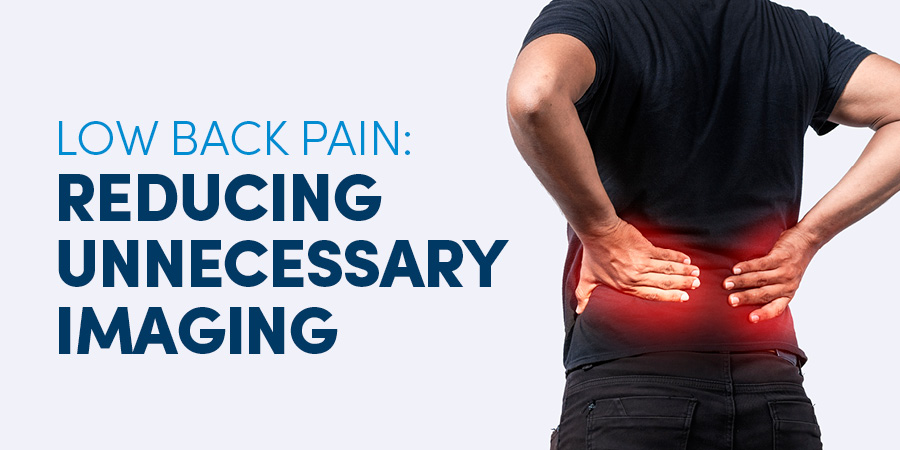

Low back pain (LBP) is incredibly common, affecting 75% of adults at some point in their lives. Each year, 2.5 million Americans seek outpatient care for LBP. While most LBP resolves within two weeks, unnecessary imaging (X-rays, MRIs, CT scans) is often ordered. Avoiding imaging for patients when there is no indication of underlying “red flag” conditions can prevent unnecessary harm and reduce health care costs.
Compliance occurs when adults — ages 18-75 with a Principal/Primary ICD-10 diagnosis of Uncomplicated LBP — do NOT receive imaging studies within 28 days of their initial diagnosis.
ICD-10 Uncomplicated Low Back Pain Code Ranges: M47.26-M47.898; M48.061-M48.08; M51.16-M51.87; M53.2X6-M53.88; M54.16-M54.9; M99.03-M99.84; S33.100A-S33.9XXA; S39.002A-S39.92XS.
Yes, the following conditions are not considered uncomplicated LBP-related. If submitted as the Principal/Primary diagnosis, imaging would be acceptable for these conditions:
Note: This is not a complete list.
Sometimes, imaging may be necessary for LBP. The following “red flag” conditions suggest a more serious underlying issue and may warrant imaging. These conditions would exclude the member from the HEDIS LBP measure:

HEDIS measures the level of quality care provided by physicians and health plans. Here are some tips for meeting or exceeding the requirements of the HEDIS measure for LBP:
The Highmark Provider Resource Center (PRC) has the following educational materials available for download:
To order copies for your practice, go to the PRC > EDUCATION/MANUALS > Inventory Request Form > Select Printable Item. Click the down arrow and then select the items you wish to order. Complete the form and click the ADD TO ORDER button.
*HEDIS® — an acronym for Healthcare Effectiveness Data and Information Set — is a registered trademark of NCQA.
Highmark does not recommend particular treatments or health care services. This information is not intended to be a substitute for professional medical advice, diagnosis, or treatment. You should determine the appropriate treatment and follow-up with your patient. Coverage of services is subject to the terms of each member’s benefit plan. Additionally, state laws and regulations governing health insurance, health plans and coverage may apply and will vary from state to state.